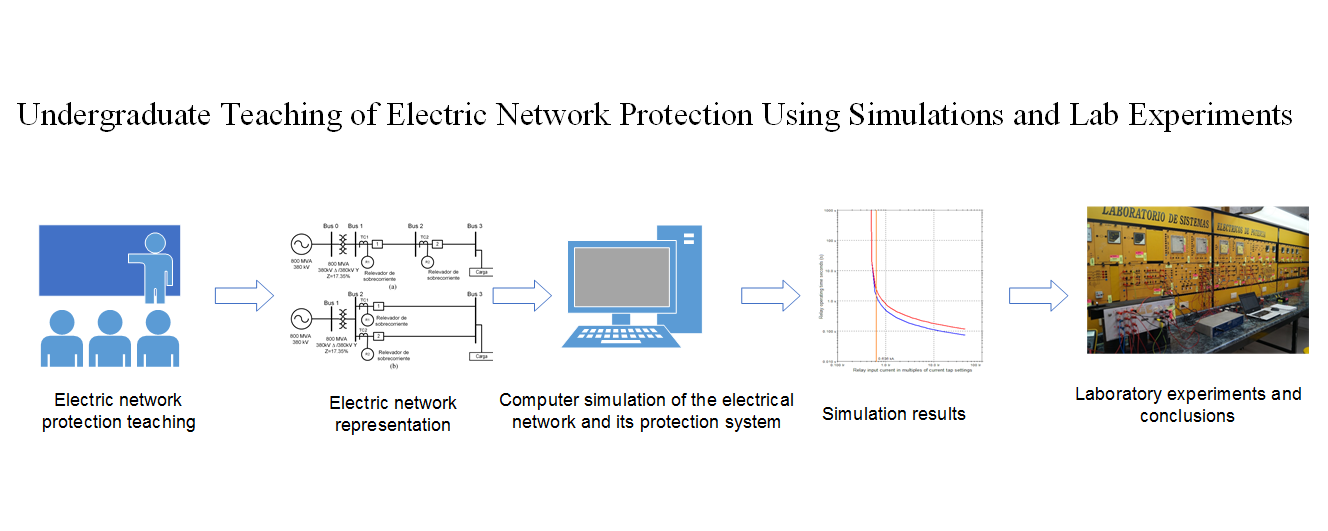Undergraduate Teaching of Electric Network Protection Using Simulations and Lab Experiments
Keywords:
overcurrent protection, Power system protection, relay, e-learningAbstract
The protection of the electric power system (EPS) components such as synchronous generators, transformers, transmission lines, and substations is important because it allows having continuity in the electricity service when disturbances are present. It also avoids a possible permanent damage to the elements of the EPS. The relays monitor variables as voltages, currents, harmonics, frequency, active and reactive power. The function of the relay is to detect an abnormal operating condition, and with the aid of breakers a faulted equipment can be isolated by disconnecting only a small portion of the EPS, so that a small number of consumers are affected. The relay setting adjustment is important because it must operate in a safe, reliable and coordinated way. The above can be achieved by teaching to students the philosophy, theory, adjustments, and coordination of relays in an electrical network, and by using computer simulations a more effective teaching and learning can be achieved. However, to have a more complete contribution in learning the relay coordination philosophy, the usage of a laboratory is highly recommended. In this paper, a hybrid approach for teaching electric network protection is presented. It is aimed at undergraduate students of electric engineering and it is based on the use of computer simulation of mathematical models and laboratory experiments. To demonstrate the proposed teaching approach, computer simulations and lab experiments of an overcurrent inverse time relay were carried out in radial and parallel electrical networks where different case studies were successfully tested.
Downloads


